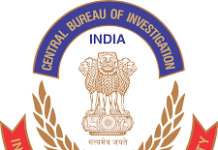
India is dealing with a second wave of coronavirus that is far more deadly than the first, and scientists believe the increase is due in part to mutating strains.
The B.1.617 strain, which was first discovered in India, has been reclassified as a “variant of concern” by the World Health Organization, indicating that it poses the “greatest public health risk.”
According to data from India’s health ministry, India is the world’s second-worst-affected country, with more than 22.66 million infections and more than 246,000 deaths to date. According to experts, the numbers are likely underreported because many people never make it to hospitals that are running out of beds and oxygen.
What do we know so far?
The first B.1.617 samples were discovered in India in October, and authorities announced in March that the variant had become more common in the Maharashtra state.
The World Health Organization reclassified the strain as a “variant of concern” on Monday. It used to be known as a “variant of interest,” which is a lower level of alert.
According to Dr. Maria Van Kerkhove, WHO Covid-19 technical lead, there is evidence that B.1.617 has “increased transmissibility” and “some reduced neutralisation.”
Variants of concern are more contagious, cause more severe disease or reduce the effectiveness of public health measures, vaccines or medication, according to the UN health agency.
Has it sparked a second wave in India?
The sharp increase in Covid-19 cases in India was caused by a number of factors, including mutating variants.
Multiple variants circulating in India are showing increased transmissibility, according to the WHO, but B.1.617 has a faster growth rate.
We turned our back on the virus, but the virus did not turn its back on us. And now we are paying the price.
K Srinath Reddy
PRESIDENT, PUBLIC HEALTH FOUNDATION OF INDIA
B.1.617 has three sub-lineages, each with slightly different mutations, WHO said. As cases in India saw a “major upsurge,” the B.1.617.1 and B.1.617.2 lineages have become more prevalent, the health agency said.
The variant has sometimes been referred to as a “double mutant” because it carries two mutations — the E484Q and L452R — that may make the virus more contagious and better at evading the body’s defenses. A third mutation in the variant, the P681R, can potentially lead to “enhanced transmission,” the WHO said.
Do vaccines have any effect?
BioNTech CEO Ugur Sahin told CNBC last month that he is “confident” that the company’s vaccine, which was developed in collaboration with Pfizer in the United States, is effective against the Indian variant.
“We had similar double mutants in our prior testing, and we are confident based on the data we had in the past that we might see a similar fashion of neutralization of this virus,” he said, though BioNTech did not have sufficient data on B.1.617 at that point.
According to the WHO, preliminary laboratory studies revealed that 28 Covaxin recipients were able to neutralise the B.1.617 variant. Bharat Biotech and the Indian Council of Medical Research collaborated to develop Covaxin, a vaccine.







